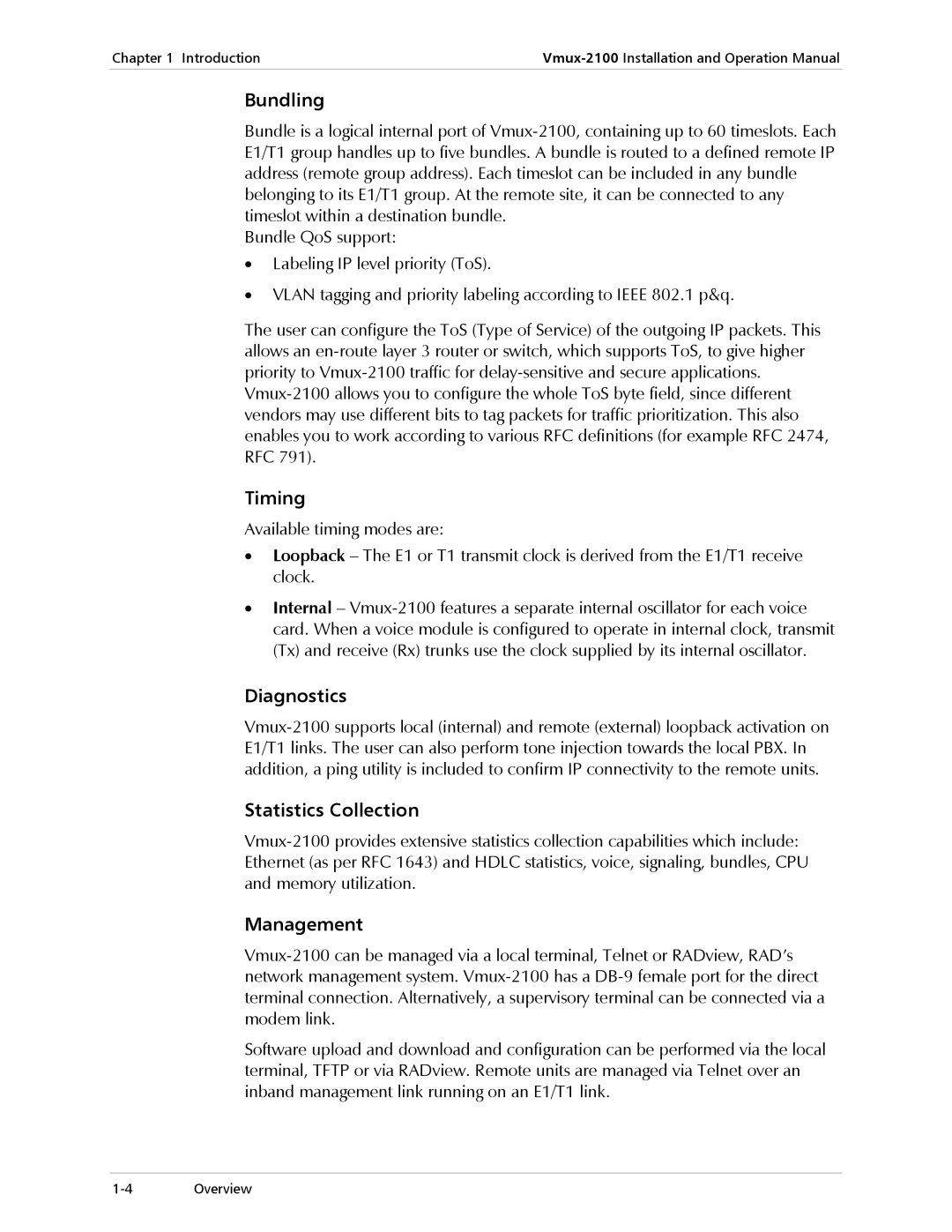Chapter 1 Introduction | |
|
|
Bundling
Bundle is a logical internal port of
Bundle QoS support:
•Labeling IP level priority (ToS).
•VLAN tagging and priority labeling according to IEEE 802.1 p&q.
The user can configure the ToS (Type of Service) of the outgoing IP packets. This allows an
Timing
Available timing modes are:
•Loopback – The E1 or T1 transmit clock is derived from the E1/T1 receive clock.
•Internal –
Diagnostics
Statistics Collection
Management
Software upload and download and configuration can be performed via the local terminal, TFTP or via RADview. Remote units are managed via Telnet over an inband management link running on an E1/T1 link.
